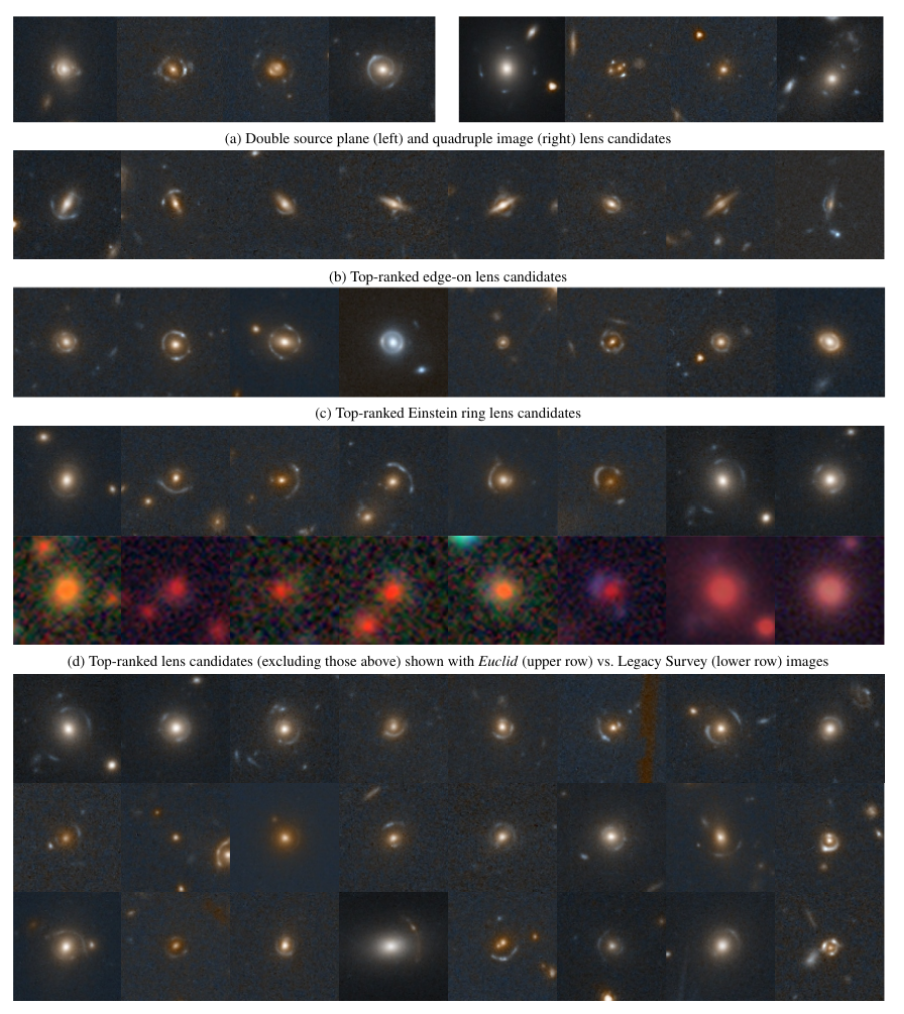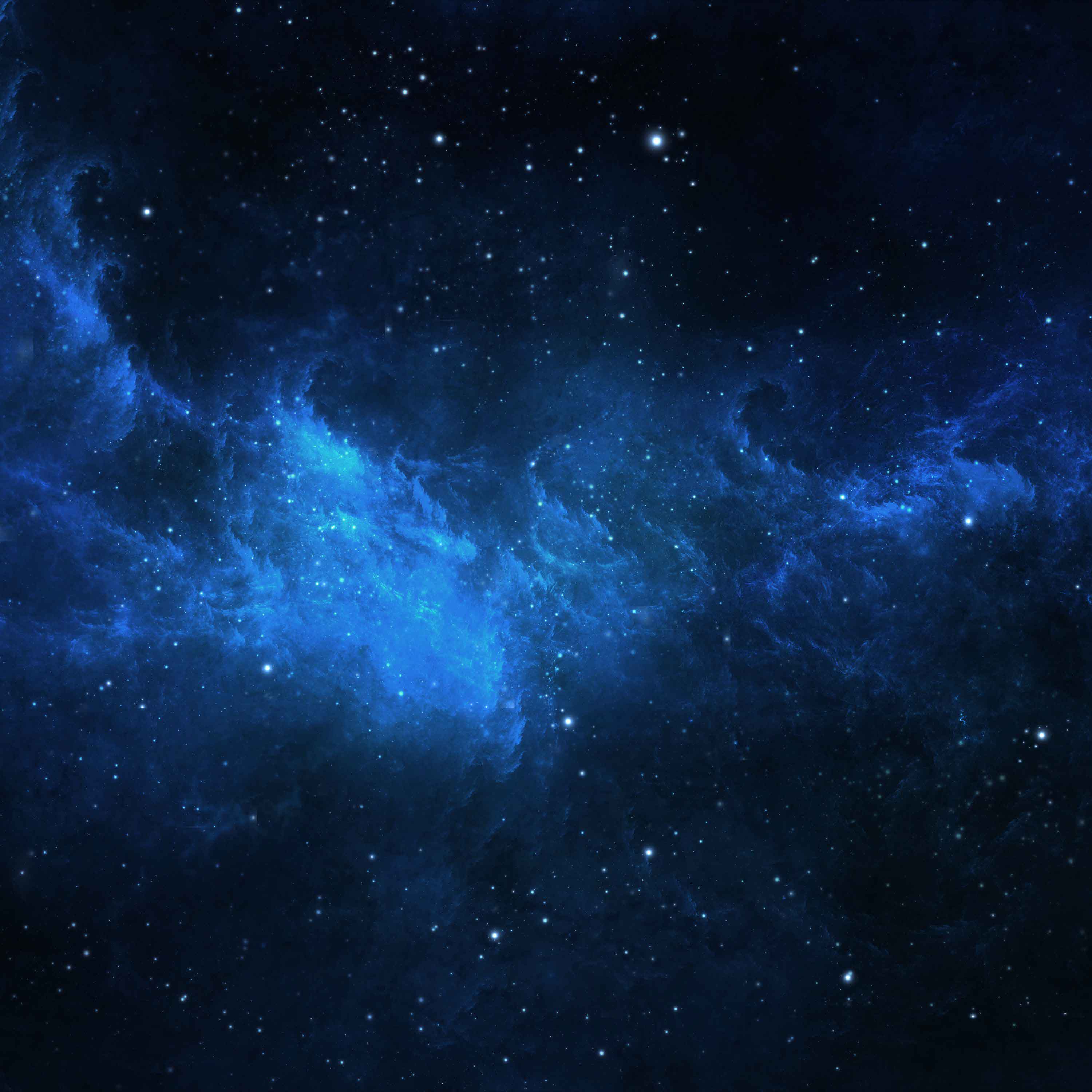
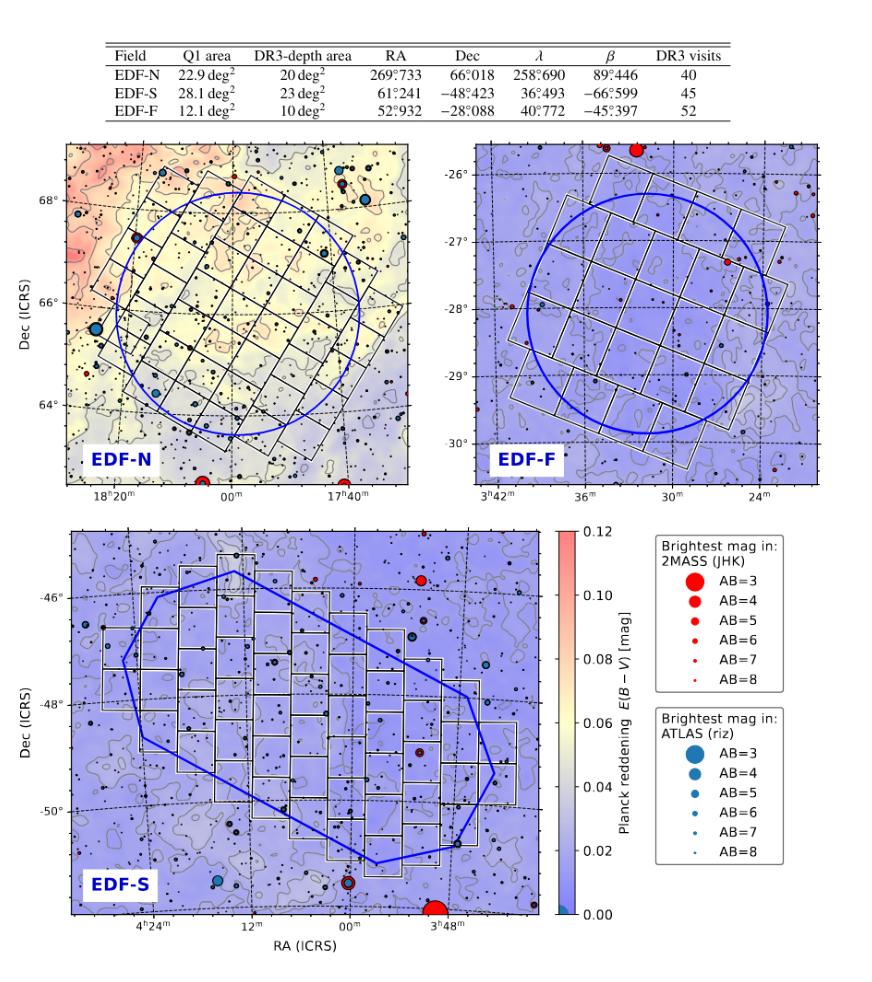
The Euclid Consortium has published scientific papers and released exclusive data covering 63 square degrees, demonstrating the power of the space telescope (see opposite the location of Euclid’s deep fields (North, South, Fornax). With less than one percent of the nominal survey, many exciting results are already available, including the identification of galaxy filaments and the discovery of unknown galaxy clusters. Euclid has also made it possible to study active galactic nuclei (AGN) and catalog thousands of new candidates using artificial intelligence. An AI-driven participatory science campaign on Zooniverse identified over 500 strong gravitational lenses, helping to understand dark matter and galaxy dynamics. Euclid has also discovered thousands of dwarf galaxies and mysterious objects from the early Universe. The results and articles describing the data and analysis procedures are available in articles on the ESA or consortium websites (links below):
https://www.euclid-ec.org/public/press-releases/euclid-quick-data-release-1/
They give a foretaste of the quality of cosmological data expected for the next delivery covering 1900 square degrees in about a year’s time. LAM’s Euclid team was on deck to present the spectroscopic analysis pipeline (1), the search for strong lenses (2), and the photometric redshift determination pipeline (3).
(1) Euclid Quick Data Release (Q1) — Characteristics and limitations of the spectroscopic measurements, Euclid Collaboration ; Le Brun et al.
https://ui.adsabs.harvard.edu/abs/2025arXiv250315308E/abstract
(2) Euclid Quick Data Release (Q1): The Strong Lensing Discovery Engine A — System overview and lens catalogue, Euclid Collaboration ; Walmsley et al.
https://ui.adsabs.harvard.edu/abs/2025arXiv250315324E/abstract
(3) Euclid Quick Data Release (Q1). Photometric redshifts and physical properties of galaxies through the PHZ processing function, Euclid Collaboration ; Tucci et al.
https://ui.adsabs.harvard.edu/abs/2025arXiv250315306E/abstract
Results of automatic redshift measurement on the sample of galaxies selected for cosmological parameter measurement. By comparison with the redshifts published in DESI, the success rate is higher than the 80% required for this measurement.
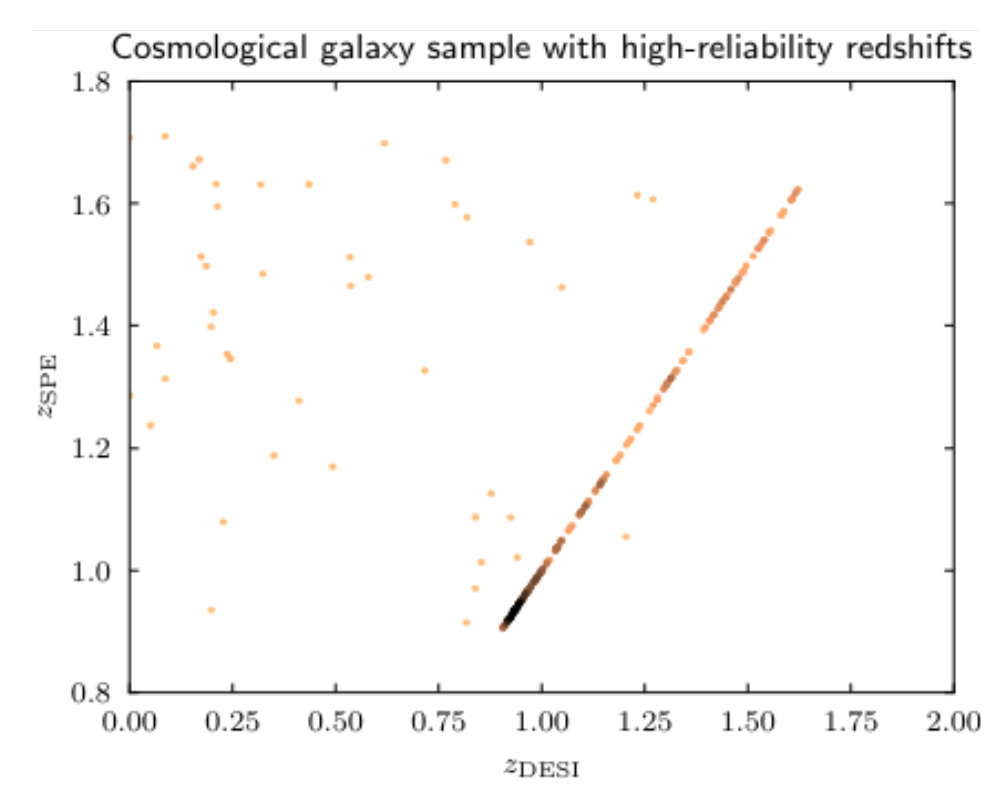
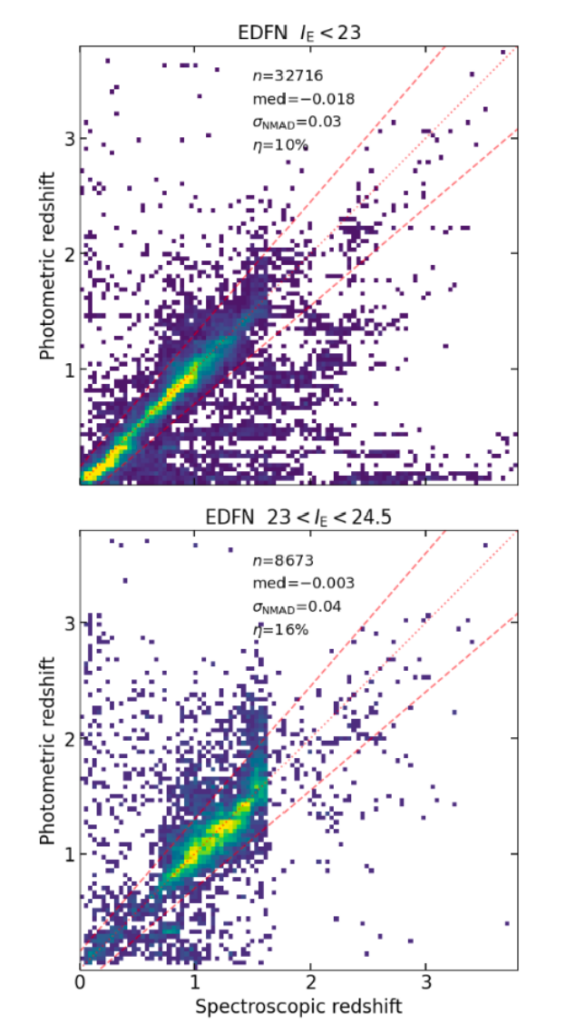
Comparison between galaxy distances measured with photometry (photometric redshifts) and reference distances (spectroscopic redshifts). This figure illustrates the precision of photometric redshifts expected for the billions of galaxies that will be observed with VIS, NISP and complementary ground-based photometric data (UNIONS).
Below: an overview of some of the ~500 new gravitational lenses discovered in Q1.
